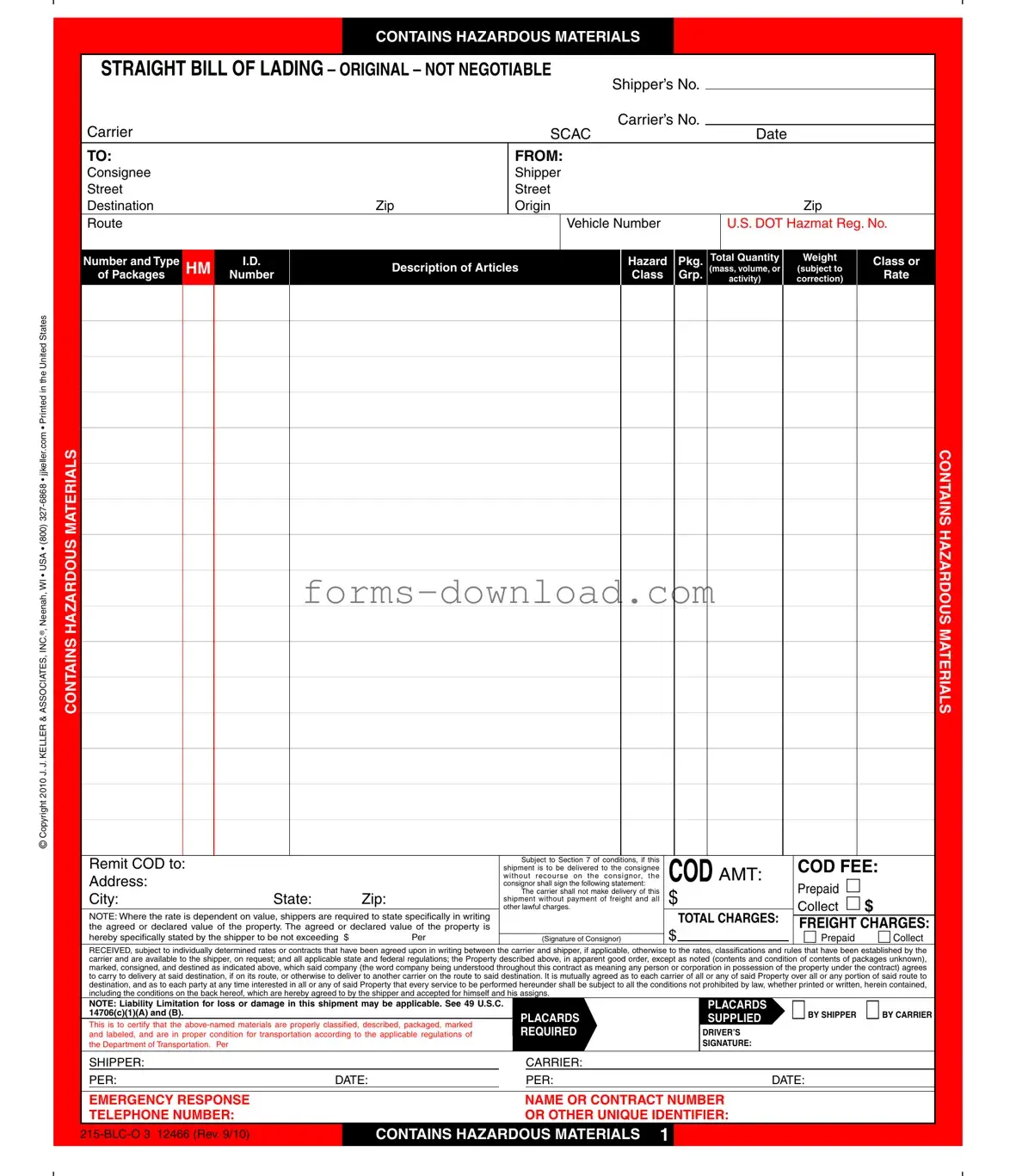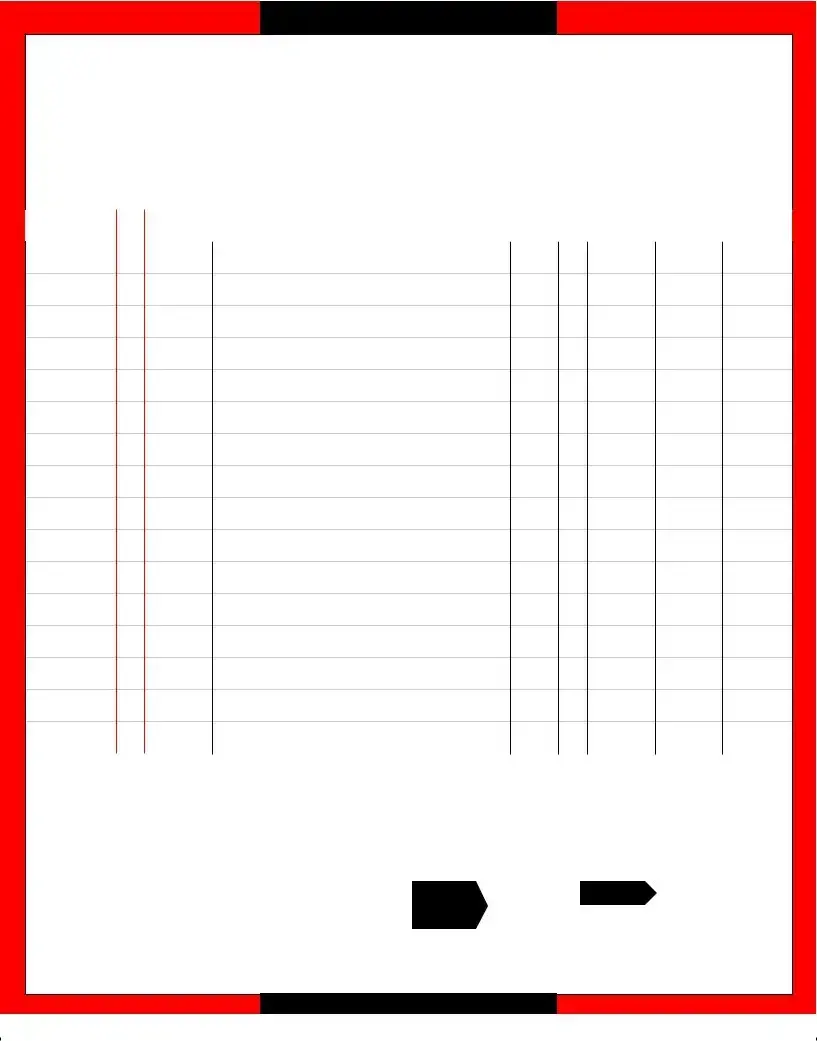By giving the carrier the property described in this bill of lading (the “Property”), you agree to all of the terms of this bill of lading.
Section 1 Limitations of Liability
(a)The carrier or party in possession of the Property shall be liable as at common law for any loss of or damage to such Property, except as hereinafter provided.
(b)The carrier shall not be liable for loss of, damage to or delay in delivery of the Property:
(i)caused by an act of God, the public enemy, the authority of law, or any act or default by you and/or the owner of the Property, or for natural shrinkage.
(ii)occurring while the Property is stopped and held in transit at your request or that of any other party entitled to make such request.
(iii)resulting from a defect or vice in the Property, or from riots or strikes.
(c)To the extent permitted under the Carmark Amendment, the liability of the carrier for the Property may be limited to a value established by written or electronic declaration by you or by written agreement between the carrier and you. In all cases not prohibited by law, where a lower value than actual value has been represented in writing by the shipper or has been agreed upon in writing as the released value of the Property as determined by the classification or tariffs upon which the rate is based, such lower value plus freight charges if paid shall be the maximum amount to be recovered, whether or not such loss or damage occurs from negligence.
Section 2 Filing of Claims
(a)Claims against the carrier for loss of or damage to the Property must be filed in writing with the carrier issuing this bill of lading within nine months after delivery of the Property (or, in case of export traffic, within nine months after delivery at port of export) or, in case of failure to make delivery, then within nine months after a reasonable time for delivery has elapsed. All causes of action must be instituted within two years following the date when written notice is given by the carrier to you that the carrier has disallowed the claim or any part or parts thereof specified in the notice. If your claim or action is not filed or instituted properly in accordance with the foregoing provisions, the carrier shall not be liable, and such claims may not be paid.
(b)The carrier shall have the full benefit of any insurance that may have been effected upon or on account of the Property in the event that the carrier is liable for loss of or damage to the Property.
Section 3 Method of Transportation
Except as expressly agreed in writing by the parties to this bill of lading, the carrier is not bound to transport the Property by any particular motor vehicle, or in time for any particular market or otherwise than with reasonable dispatch. The carrier shall have the right in case of physical necessity to forward said Property by any carrier or route between the point of shipment and the point of destination.
Section 4 Responsibility for Property
(a)If the Property is not removed by the party entitled to receive it within the free time allowed by tariffs or classifications upon which the rate is based, (such free time to be computed as therein provided), the carrier may notify the receiving party of the arrival of the Property at the destination or at the port of export (if intended for export). The carrier, in its discretion, may store the Property in a public or licensed warehouse at the place of delivery or other available place, at the cost of the owner. The stored Property will be subject to a lien for all freight and other lawful charges, including a reasonable charge for storage. The carrier’s responsibility shall be that of a warehouseman only.
(b)Except as provided in subparagraph 4(c) below, if the Property is refused by consignee or the party entitled to receive it, or said consignee or party entitled to receive it fails to receive it within 15 days after notice of arrival shall have been duly sent or given, the carrier may sell the Property at public auction to the highest bidder, at such place as may be designated by the carrier. Prior to any such sale, the carrier shall use commercially reasonable efforts to notify you that the Property has been refused or remains unclaimed, as the case may be, and that it will be subject to sale under the terms of the bill of lading if you do not arrange for an alternative disposition.
(c)If the Property is perishable and is refused by the consignee or party entitled to receive it at the destination location, or said consignee or party entitled to receive it shall fail to receive it promptly, the carrier, may, in its discretion, to prevent deterioration or further deterioration, sell the same to the best advantage at private or public sale. Prior to selling the Property, the carrier shall use commercially reasonable efforts to notify you of the refusal of the Property or the failure to receive it, and request instructions regarding disposition of the Property.
(d)If the procedure described in subsection (b) and (c) is not commercially reasonable, the carrier may, at its option, sell the Property under such circumstances and in such manner as may be authorized by law.
(e)The carrier shall apply the proceeds of any sale made under this section to the payment of freight, demurrage, storage, and any other lawful charges and the expense of notice, advertisement, sale, and other necessary expense and of caring for and maintaining the Property, if proper care of the same requires special expense. If following payment of the preceding there is a balance, such balance shall be paid to the owner of the Property sold hereunder.
(f)If you direct the carrier to deliver the Property to a location where there is no regularly appointed freight agent, the carrier shall not be liable for any loss or damage to Property occurring at such location after the Property has been unloaded at such location.
Section 5 Valuable Items
(a)The carrier’s liability in connection with the Property is limited to the lesser of the amount of your actual damages or the declared value stipulated by the carrier on the face of this bill of lading plus any freight charges paid by you.
(b)The carrier shall not be liable in any way for any documents, specie, or for any articles of extraordinary value not specifically rated in the published classifications or tariffs unless a special agreement to do so and a stipulated value of the articles are endorsed on this bill of lading.
Section 6 Joint Liability for Hazardous Goods
You, and if you are an agent, any owner of the Property, shall be joint and severally liable for and indemnify the carrier against all loss or damage caused by the shipment of explosives, dangerous or hazardous goods, without giving prior written notice to the carrier of their nature. At the discretion of the carrier, any such goods may be warehoused at your and the owner’s risk and expense or destroyed without compensation.
Section 7 Freight Charges and Payment
(a)You are primarily responsible for the freight and all other lawful charges, unless you stipulate in writing in the space provided for that purpose on the face of this bill of lading that the carrier shall not make delivery without requiring payment of such charges and the carrier makes delivery without requiring such payment. If you provide erroneous information that results in the shipment being reconsigned or diverted to a location other than the location identified in the original bill of lading, you shall be liable for such additional charges. The respective liability of you and the consignee for additional charges provided for herein shall be pursuant to 49 U.S.C. § 13706.
(b)Nothing in this bill of lading shall limit the right of the carrier to require the prepayment or guarantee of charges at time of shipment. If upon inspection the carrier determines that the articles shipped are not those described in this bill of lading, the freight charges must be paid upon the articles actually shipped.
Section 8 Effect of Shipper Signature
If this bill of lading is issued on the order of the shipper, or his agent, in exchange or in substitution for another bill of lading, the shipper’s signature to the prior bill of lading as to the statement of value or otherwise, or election of common law or bill of lading liability, in or in connection with such prior bill of lading, shall be considered a part of this bill of lading as fully as if the same were written or made in or in connection with this bill of lading.
Section 9 Transport by Water
If all or any part of the Property is carried by water over any part of said route, and any loss of or damage to the Property occurs while it is in the custody of the carrier providing the water carriage, the liability of such carrier shall be determined by that carrier’s bill of lading and by the laws and regulations applicable to transportation by water. Such water carriage shall be performed subject to all of the terms and provisions of, and all the exemptions from liability contained in the Harter Act or the Carriage of Goods By Sea Act, as applicable.


